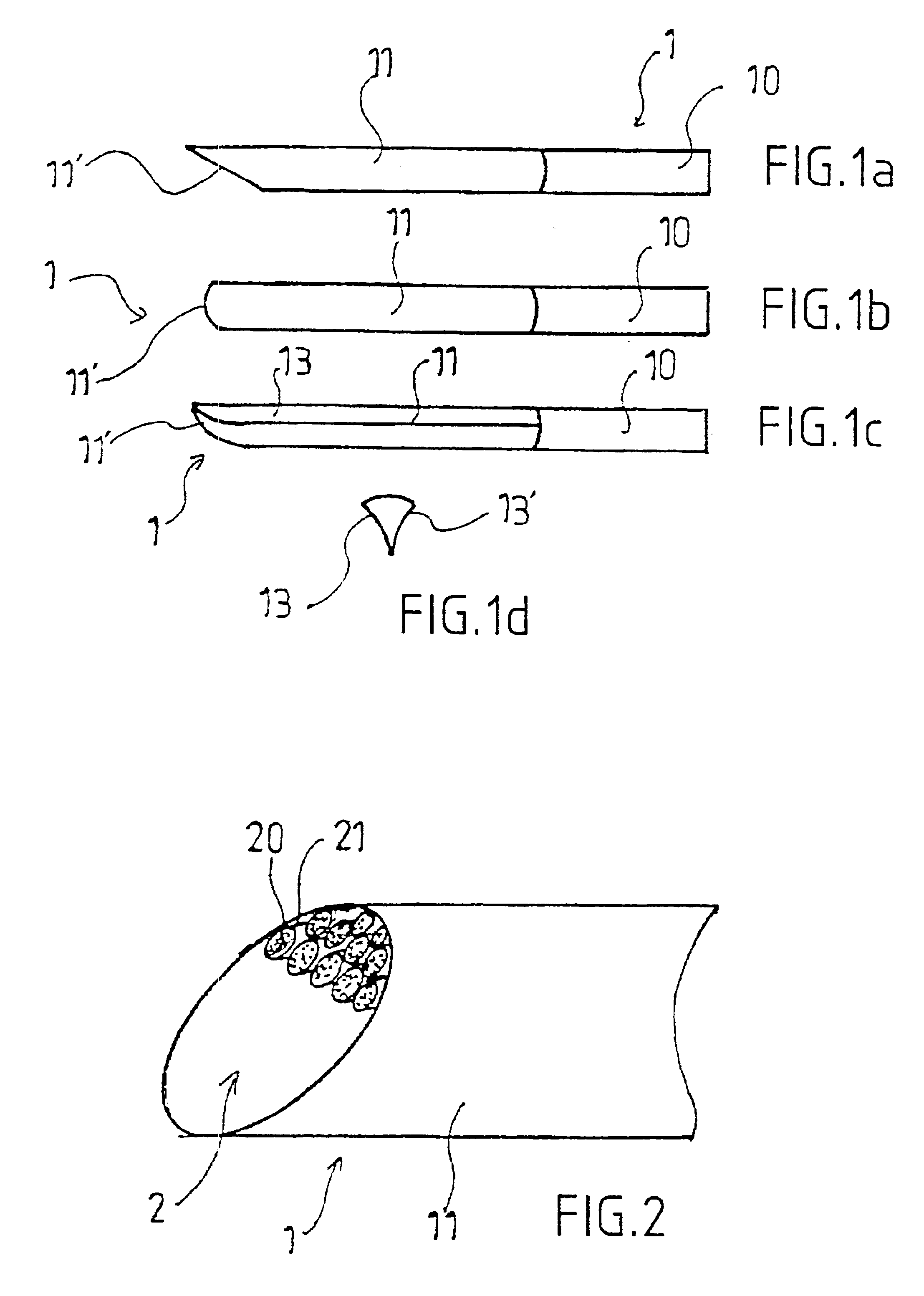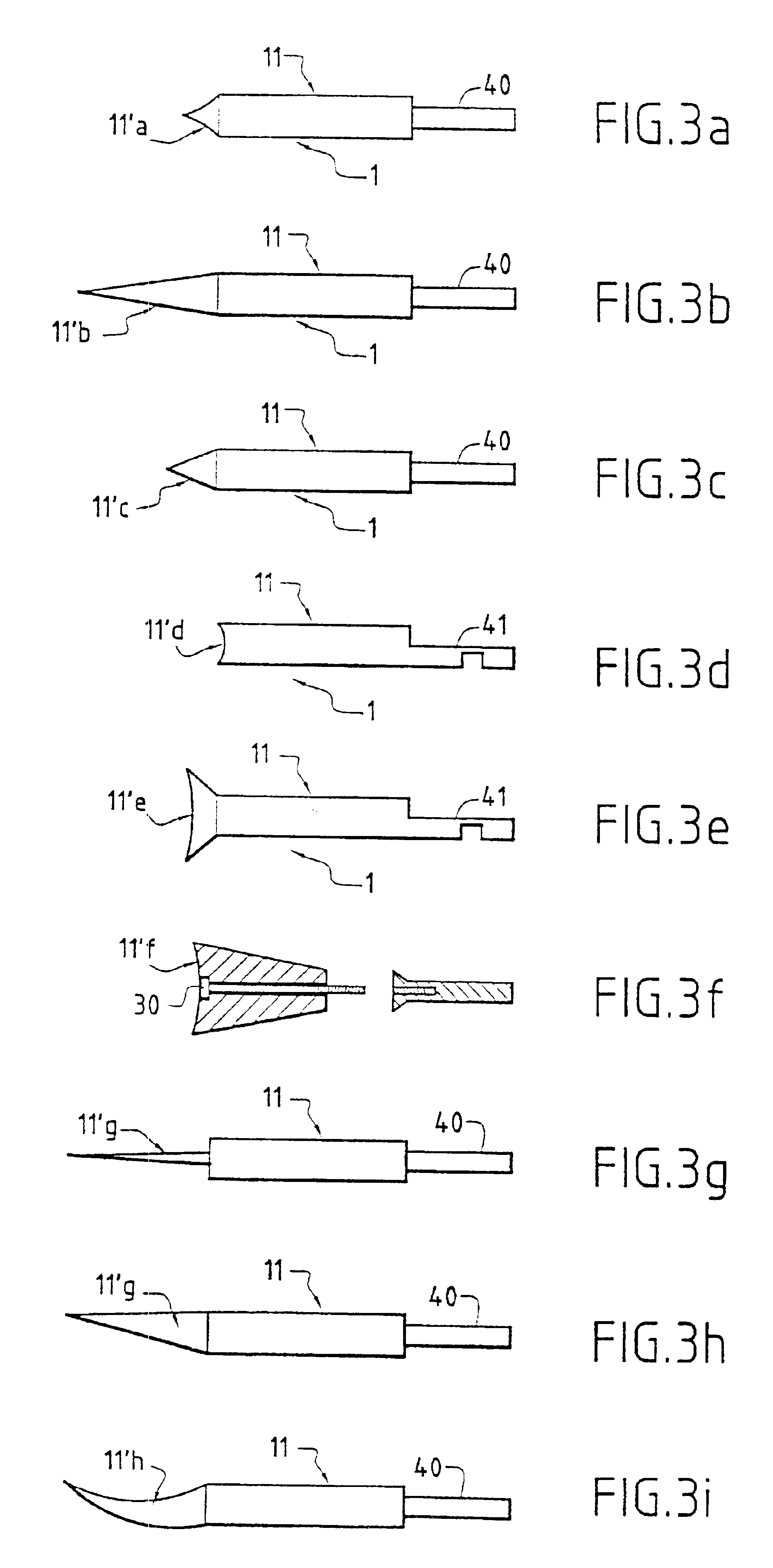Hygiene instrument for cleaning and polishing the surface of the teeth and the composite materials of dental fillings
a dental filling and surface polishing technology, applied in the field of hygiene instruments, can solve the problems of insatiable instruments, immediate discomfort, shredding and remaining stuck between the teeth, etc., and achieve the effect of low cos
- Summary
- Abstract
- Description
- Claims
- Application Information
AI Technical Summary
Benefits of technology
Problems solved by technology
Method used
Image
Examples
first embodiment
In this invention, the rod is made only of abrasive fibers embedded in a resinous matrix and is rigid. The abrasive fibers give a scratching action, which removes stains.
second embodiment
In this invention, the rod is made of abrasive fibers and a load of abrasive particles which are included in the resin matrix and is rigid, and the abrasive function created by the fibers or by the particles can be the same or different according to the choice of fibers and particles.
third embodiment
In this invention, the structure of the rod is created from abrasive fibers and non-abrasive particles embedded in a resinous matrix, these unabrasive particles being able to smooth the abrasive power of the fiber and permitting to obtain a desired viscosity of the resin.
The structure of the rod can contain, in addition, a nucleus, made of a metal, a resin or a composite material, of a same or different type from the material forming the rod, and of the same or a different color.
The particles of the load allow, depending on their type, their shapes, their dimensions, and / or their quantity, to make varying the abrasive effect of the instrument, these particles, having preferably a hardness between 3 and 10 on the MOHS scale and a size between 2 and 25 microns.
The particles can be of the same size or have different sizes in order to diminish the interstitial spaces between adjacent particles and in order to promote regularity of the abrasive effect.
The load of these particles can vary...
PUM
| Property | Measurement | Unit |
|---|---|---|
| size | aaaaa | aaaaa |
| size | aaaaa | aaaaa |
| diameter | aaaaa | aaaaa |
Abstract
Description
Claims
Application Information
 Login to View More
Login to View More - R&D
- Intellectual Property
- Life Sciences
- Materials
- Tech Scout
- Unparalleled Data Quality
- Higher Quality Content
- 60% Fewer Hallucinations
Browse by: Latest US Patents, China's latest patents, Technical Efficacy Thesaurus, Application Domain, Technology Topic, Popular Technical Reports.
© 2025 PatSnap. All rights reserved.Legal|Privacy policy|Modern Slavery Act Transparency Statement|Sitemap|About US| Contact US: help@patsnap.com



